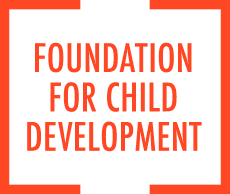https://www.fcd-us.org/culture-and-practice-of-mexican-primary-schooling-implications-for-improving-policy-and-practice-in-the-u-s/
Jensen B.T. (2005, October). Culture and Practice of Mexican Primary Schooling: Implications for Improving Policy and Practice in the U.S. Current Issues in Education [On-line], 8(25).
Children of Mexican immigrant families represent one of the fastest growing student populations in the United States. In 2000, 39 percent of all children from immigrant families - families in which at least one parent is foreign-born - were of Mexican origin. After México, no other country-of-origin accounted for more than 4 percent of the total population of children from immigrant families.
Recent attention in U.S. education policy and practice has begun to muster concerted efforts on assessing and improving educational outcomes for young children in early education (i.e., PK-3). This movement has been induced by differences in school readiness and academic achievement between socioeconomic and racial/ethnic groups, and has shown that early interventions are cost effective and generally have the capacity to narrow achievement differences.
Children of Mexican immigrant families and the general public have much to gain from quality early education programs. However, in order to increase participation rates and program quality for this segment of the young child population, it is recommended that early education programs incorporate culturally and linguistically relevant pedagogical strategies. This paper argues that, without an enlightened discussion and integration of cultural factors into our policies, curriculum, and instructional practices, the rate of educational progress may be considerably slower than would otherwise be the case. School personnel who are aware of and responsive to cultural components associated with the educational contexts of their students are more likely to facilitate positive student outcomes. Moreover, this paper provides exploratory data and a window into the cultural context of schooling at a public primary school in México. Data were gathered via field observations and interviews with students, teachers, school administrators, and parents. Findings are couched in the context of improving practices and policies in U.S. schools that serve Mexican immigrant children.
The paper begins with a summary of evidence that supports the notion of a national interest in improving educational outcomes for Mexican children in the U.S. Next, a literature review on the intersection between family linguistic and cultural practices and early educational settings is offered. Lastly follows an analysis of qualitative data collected at a public primary school (grades 1-6) in México during the spring/summer of 2004. These data allow the reader to begin to understand what the culture of schooling means to Mexican children and families and, hopefully, how to emulate strategically this culture in feasible ways that promote meaningful educational experiences and outcomes for Mexican immigrant children in the U.S. Specifically, data discussing el grupo escolar (the school group), el turno matutino vs. el turno vespertino (morning vs. afternoon shifts), and el comité de padres (the parent committee) are presented. It is the author’s anticipation that this sort of binational and cultural work would stimulate further discussion and research as a means of improving educational outcomes for this rapidly growing segment of the nation’s children.
